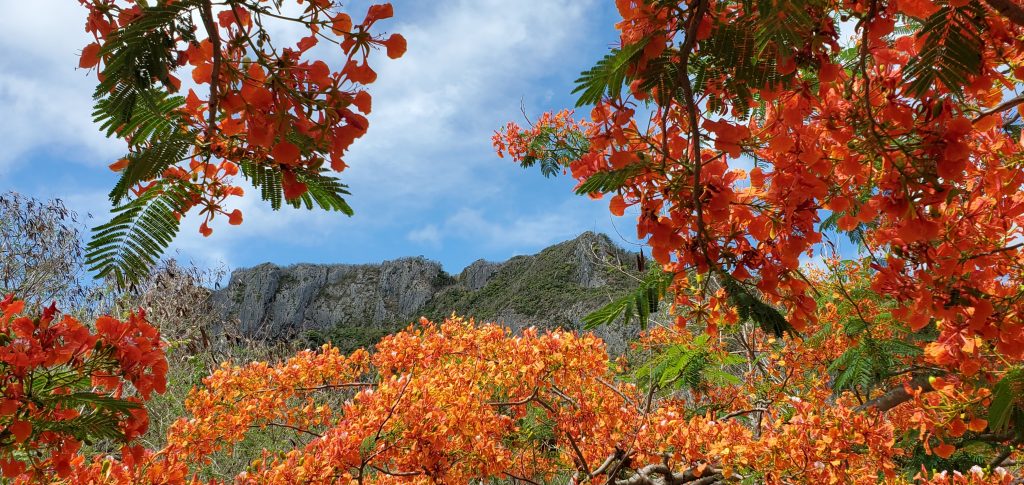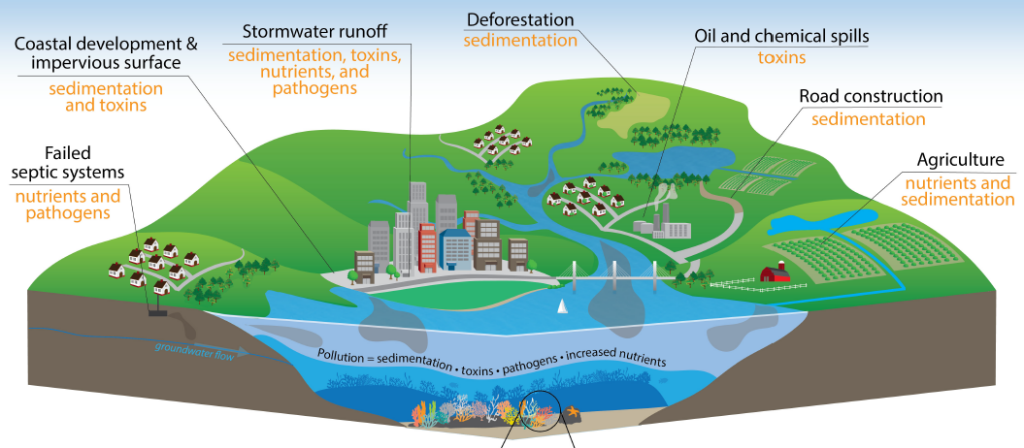Watershed Management

Clean water is vital for healthy communities and resilient reef ecosystems. Coral reef management depends on a ridge-to-reef approach. In order to thrive, coral requires sunlight, clean water, and a balanced ecosystem. Land-based sources of pollution (see examples in figure below) are a major threat to coral reefs in the CNMI because they smother coral (i.e. sedimentation), introduce pathogens, and disrupt or destroy ecological function. DCRM leads watershed management planning as a tool to reduce pollution and protect coral reefs.
Watershed management is done in close partnership with the BECQ Division of Environmental Quality (DEQ), which is responsible for monitoring and evaluating the health of CNMI’s inland and marine waters. Collecting regular water quality samples ensures that the coastal zone continues to support marine life, recreation, and public health standards (see DEQ’s Water Surveillance & Non-point Source website here).

Priority Watersheds
A “watershed” is an area of land where water collects and flows into a shared body of water (be it a river, lake, or the ocean). Four local “priority” watersheds have been identified as the central focus of the Coral Reef Initiative’s land-based coral conservation efforts: Garapan (West Takpochao) and Laolao Bay, and most recently Achugao on Saipan, and Talakhaya on Rota. These watersheds were selected for their economic, biological, and social significance because they are high-use areas with vital natural resources.
Visit these watershed pages (or the use the links above) to learn more about the watershed management projects in each priority area, as well as watershed threats. And consider joining CNMI’s Watershed Working Group (WWG).
